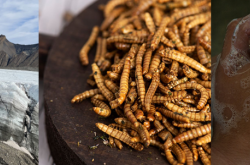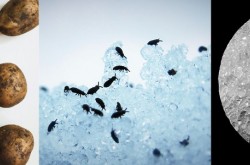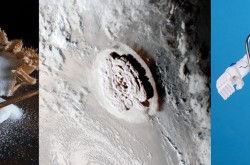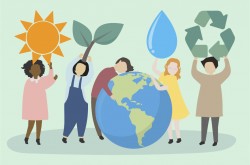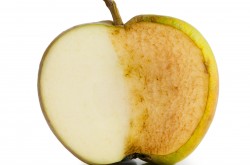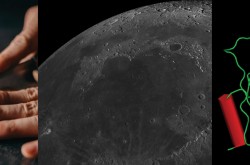3 things you should know about Christmas trees, COVID-19 vaccines, and the International Space Station

Meet Renée-Claude Goulet and Michelle Campbell Mekarski.
They are Ingenium’s science advisors, providing expert scientific advice on key subjects relating to the Canada Agriculture and Food Museum and the Canada Science and Technology Museum. Jesse Rogerson, formerly the science advisor for the Canada Aviation and Space Museum, continues to lend his expert voice to the Channel.
In this colourful monthly blog series, Ingenium’s past and present science advisors offer up three quirky nuggets related to their areas of expertise. For the December edition, they tackled finding the perfect Christmas tree, what’s in a vaccine, and the twentieth anniversary of the International Space Station.

Christmas trees typically drop their needles six to seven weeks after harvest, and when not getting enough water.
Science is helping to grow the perfect Christmas tree
The Christmas trees for sale during the holiday season aren’t harvested from forests. Rather, they are grown on tree farms across Canada — mostly in the eastern provinces and British Columbia. Now, scientists are helping breed better, stronger trees with more customer appeal.
Growing Christmas trees isn’t just “plant it and forget it.” Getting healthy trees into the consumer’s home involves year-round work, and some obstacles along the way.
On the farm, annual shearing and pruning ensures trees have the characteristic cone shape and bushiness (most conifers don’t naturally grow that way!). Trees may also need to be fertilized, while pests and disease must be spotted and managed to prevent losses. Given that trees may be six to 15 years old when harvested, it’s important to keep them healthy from seedling to harvest, or else risk losing years of work. The trees must also stand up to being tightly wrapped by balers, so they are protected when travelling across Canada and the world. In these last steps, trees risk being exposed to conditions which make them drop their needles, ruining the condition of the trees.
Researchers at the Christmas Tree Research Programme of Canada — at Dalhousie University’s agricultural campus in Bible Hill, Nova Scotia — study balsam firs, to develop solutions to challenges faced by the producers and to improve the consumer appeal of fresh-cut trees. This work is done through plant breeding and novel plant propagation technology, such as tissue culture, a form of cloning.
One of the outcomes of this program is the “senescence modulated abscission regulated technology” or SMART tree: a balsam fir hybrid representing the ‘ideal’ tree. With improved growth and vigor, stress tolerance, and disease resistance, it gives growers in Nova Scotia a new option — one that could mean less labour and fewer losses. Of course, this tree is visually appealing, with a pleasing scent; but the best part? It hangs on to its needles much better than the average, best cared-for Christmas tree! The SMART tree keeps its needles up to 12 weeks after harvest, instead of the more typical six to seven weeks. Now that’s a major perk!
Since the first SMART trees were just recently planted, we won't get to have them in our living rooms quite yet. Until then though, there is one scientifically sound way to keep needles on the tree instead of the floor: treat your tree like a cut flower and give it plenty of water every day — it will thank you for it!
By Renée-Claude Goulet

Eight Canadians have visited the International Space Station over the course of its 20-year history in space.
The International Space Station at 20 years
Over three decades ago, many nations got together and agreed to build one of the most complicated things in human history: the International Space Station (ISS). Since then, the ISS has grown to the size of five hockey rinks side-by-side, has housed over 240 astronauts from 19 nations, and carried out almost 3,000 different science experiments.
In 1998, the first piece of the ISS was launched into space by ROSCOSMOS, and it was called Zarya. Two weeks later NASA launched Unity, which was then connected to Zarya, and thus the construction of the ISS officially started. On November 2, 2000, three astronauts boarded the ISS for the first long-duration mission (six months). Since that day, the ISS has been continually occupied by humans. That means that someone who was born after that day has only known a reality where people have been in space.
Major construction on the ISS finished in 2011 (although modifications are ongoing), and since then, the ISS has been in full-on science mode. Should we forget the impact the ISS has on our everyday lives, here’s just a small sample of what has been accomplished:
- The CanadArm built the ISS and led to the development of robotic surgery equipment like neuroArm
- Growing protein crystals in space, which has already led to treatments for multiple ailments and genetic disorders
- The microgravity environment accelerates bone loss and muscle atrophy, which has led to a deeper understanding of osteoporosis and other musculoskeletal diseases
- A suite of Earth-observing instruments aboard the ISS monitor a broad range of patterns, such as ocean currents, to animal migration, forest fires, and climate change
The major ISS partners are now looking towards the next big step: the Lunar Gateway will be a new space station in orbit around the Moon that will help support lunar operations for the Artemis program.
As for the ISS, it will continue to operate until at least 2024, but eventually the ISS will reach the end of its operational life, and be deorbited into the Pacific Ocean. That will be the end of an era, but the ISS pushed us forward scientifically, politically, and helped cement humanity’s foothold in space.
By Jesse Rogerson

COVID-19 vaccines are getting a lot of attention in the media. RNA, recombinant, and attenuated vaccines are all making headlines.
Vaccine 101: A quick guide to emerging COVID-19 vaccines
During the COVID-19 pandemic, vaccines are top of mind as they represent the promised end to pandemic misery. Worldwide, researchers are developing vaccines using old and new techniques. To help you understand the scientific news cycle, here’s a crash course in your immune system and the four main types of vaccines:
Your immune system is in a constant battle against incoming pathogens (viruses and bacteria), and has a variety of ways to fight them. Your skin acts as a barrier to external invaders, and macrophages — a type of white blood cell — work like vacuum cleaners, engulfing and destroying “bad stuff.” These generalized defenses work well most of the time, but sometimes your body needs specialists. In this case, your body creates specialized cells and proteins that effectively fight one specific disease. In the process, your body also learns how to fight that pathogen, giving you immunity in the future.
A vaccine is a product that activates this specific immune response, allowing your body to gain immunity to a pathogen without having to get sick in the process.
- Whole-pathogen vaccines are the most commonly available. They use a weakened (live-attenuated) or inactivated pathogen that is unable to cause disease. Since your body’s immune system activates whether a pathogen is weakened or full strength, this works like a practise run for your body; winning on easy mode still gives your body the immune system memory it needs to beat the full strength pathogen in future.
- Genetic vaccines deliver a piece of the pathogen’s genetic code to a cell. The cell reads the code and uses it to build a protein which activates the immune system, teaching the body to recognize and fight future pathogens with that specific protein. There are two types of genetic vaccines: RNA vaccines and DNA vaccines. Cells can build proteins directly from RNA vaccines. Cells use DNA vaccines to create the RNA from which proteins are built.
The genetic material is often delivered using viral vectors. A piece of genetic material is inserted into another, harmless virus. Since viruses are excellent at getting into cells, this harmless virus does the hard work of delivering the genetic vaccine into our cells where the immune response is activated.
- Subunit (acellular) vaccines contain pieces of a pathogen, teaching your immune system to react to these specific parts. These pieces can include specific proteins, sugars, or combinations (protein-based vaccines, polysaccharide vaccines, conjugate vaccines).
One way to create these pathogenic pieces is using recombination. By putting a piece of the pathogen’s genetic code into another cell (bacteria and yeast are common), we let that cell work like a little factory to create the specific parts needed for these recombinant vaccines.
- Toxoid vaccines prevent diseases caused by pathogens that produce poisons in the body. The vaccine carries a weakened form of the toxin that the pathogen creates. This teaches your body how to fight the toxin, rather than the pathogen itself. This works for diseases like tetanus, where the toxins (rather than the pathogen) are the main cause of the illness.
Go further
- Check out this Government of Canada resource for Basic immunology and vaccinology
- CBC news vaccine tracker: a look at the different vaccines under development, and where they are in the pipeline, and the pros and cons of each vaccine type
By Michelle Campbell Mekarski


















